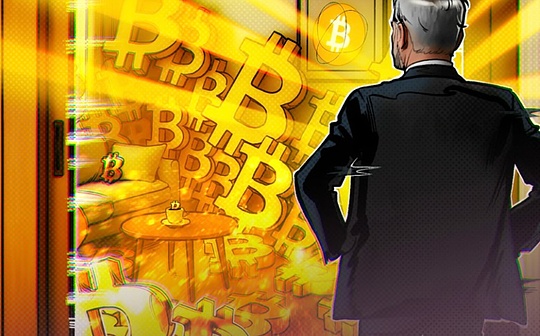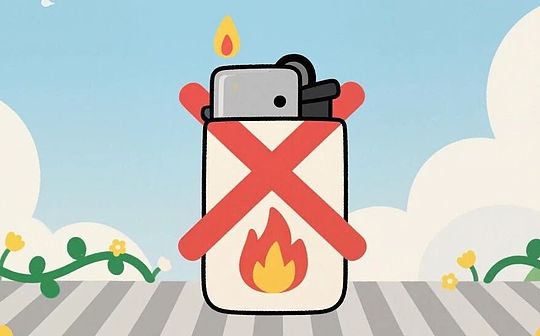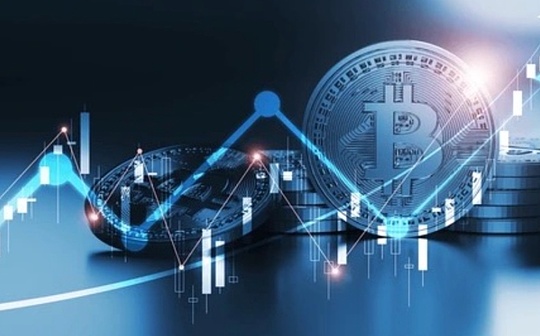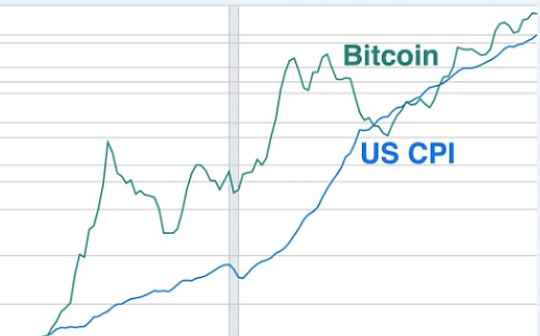
Author: danny; Source: X, @agintender
Junior high school chemistry mentioned that in order to make the blown bubbles more stable and lasting, polyvinylpyrrolidone (PVP) must be added to the solvent – a thickener and foam stabilizer, providing structure and durability for the foam, so that it can maintain its shape and resist external pressure.
Similarly, the desire to maintain Perp DEX’s sustainable liquidity and defensible market share is not achieved through passive Farming, calling orders, and brushing volume, but by actively building an extremely competitive psychological environment.”PVP” here is not only the abbreviation of chemical stabilizers, but Player-vs-Player.
Through carefully designed mechanisms, traders can confront each other. The mechanism of the protocol should be used to inspire the most powerful internal driving force of human beings – greed and unwillingness – to create a self-continued trading activity flywheel, thereby getting rid of the excessive dependence on the release of inflationary tokens and ultimately achieving true market stability.
1. Great Game: Deconstructing the Zero Sum Reality of Trading
The essence of trading is a zero-sum game. Either you lose or I make a profit. There is no need to hide it and embellish the peace.
Meme: The most primitive PvP arena
Meme’s trading ecosystem is the purest and most unconcealed embodiment of PvP principles.Unlike those assets that claim to have potential utility or cash flow, Meme’s value comes almost entirely from its cultural relevance, community hype and virality of social media, i.e. attention itself.In such a market, trading is more like a “cultural arbitrage”: forecasting may lead to the market to discover the next hot spot.This makes the Meme market a naked zero-sum game: one trader’s gains come directly from another trader’s losses.This PvP environment is pushed to the extreme on low-cost, high-throughput public chains like Solana.Trading robots are rampant, and the median position time is calculated in seconds. The market has evolved into a “super PvP” ecosystem, and newly entered retail traders are almost impossible to make considerable profits.This cruel environment reveals the essence of the speculative market – it is not a collaborative community, but an arena where participants cannibalize each other.
Since it is a place where people eat people, it is a bit redundant to say that you are a Bodhisattva who descends to earth and shines on the earth.
The hallucination of positive and growth
The mainstream narrative of the cryptocurrency industry often emphasizes its “righteous” side: the growing total market value, new application scenarios brought by technological innovation, and the continuous influx of new users.This macro narrative is real and important, but it is fundamentally disconnected from the micro level—that is, the daily experience of traders on Perpdex.For a user who trades high-frequency trading on Perpdex, his goal is not to “build a completely new financial system”, but to seize capital from other market participants as prices rise and fall.What his profit and loss (P&L) interface shows is a cruel zero-sum reality.Any successful PvP protocol must be built on this basic perception, stop packaging itself into a universal “public facility” and instead embrace its true identity as a “arena”.The positioning of the protocol should be transformed from a “trading market” to a “beating against other traders”, and this repositioning enables its product characteristics to align with the real motivations of users.
Leverage: Great Amplifier
High leverage is a core feature of Perp DEX, which plays the role of catalyst and amplifier in PvP dynamics.Leverage not only amplifies financial profit and loss, but more importantly, it greatly amplifies the intensity of emotions in PvP conflicts.The ecstasy of a profit and the devastating blow of a loss are disproportionately amplified.This amplification of emotions is crucial to “hooking” traders into the psychological cycle we will discuss in the next chapter.
The traditional incentive model assumes that trading volume is a function of liquidity and incentives, and trading volume is a function of conflict.By designing mechanisms that can create continuous, quantifiable conflicts (such as rankings, volleyball tournaments), protocols can generate a stable underlying transaction volume driven by intrinsic competition without relying on direct token rewards.
2. Doctrine of participation: Weaponizing greed and unwillingness
The core of PVP is to draw out the two hearts of people – greed and unwillingness
The Curse of Winners: Cultivating Greed and Overconfidence
For winning traders, the goal of the platform is to systematically cultivate their greed and overconfidence, prompting them to trade bolder, more frequent, and more selflessly.
-
Psychological mechanism: Successful trading triggers a series of cognitive biases.First of allOverconfidence Bias, traders tend to attribute success to their own superb skills rather than luck, thus underestimating the risks of future trading.followed byConfirmation Bias, They will actively seek information that can prove the effectiveness of their “winning strategy” and ignore the evidence of contradiction.This state of mind is called “Winner’s Curse” in trading psychology, that is, the biggest profit often indicates the biggest loss in the future.From a neuroscience perspective, profits stimulate the brain to release dopamine, form a strong reward circuit, strengthen trading behavior, and encourage traders to take greater risks in search of stronger stimulation.
Take some mainstream cex/protocols as examples:
-
Platform amplification strategy: The design of the agreement should be committed to amplifying this pleasure of victory and transforming it into an open symbol of social status.
-
Outstanding profit and loss display: Display high floating profit and loss (PNL) in the most conspicuous position on the interface, and use positive colors such as green.
-
Achievement System: Set up a “winning streak” badge, a “hundred times profit” medal, etc., to transform transaction achievements into a show-off virtual identity.
-
Public ranking list: Real-time updated rankings are the core tool for creating social pressure, which turns personal profits into open competitions.
-
Social Sharing Function: Share profit screenshots to social media with one click, making winners the platform’s “walking billboards”, while exerting FOMO, jealousy and anxiety to other users.
The game of losers: creating “unwillingness”
For failed traders, the platform’s goal is to prevent them from exiting rationally due to losses, but to stimulate their “unwillingness” and prompt them to immediately invest in the next trade to “return to their capital.”This is a stronger and more critical part of the entire psychological cycle.
-
Psychological mechanism: The core isLoss Aversiontheory.The groundbreaking research by Daniel Kaneman and Amos Tworsky proves that the psychological pain caused by losses is twice the pleasure of the same amount of benefits.This strong negative sentiment can lead to a series of irrational behaviors, such as holding a falling position to avoid admitting losses (sunken cost fallacy), or more importantly—Revenge Trading.Retaliatory transactions are impulsive, high-risk transactions that are carried out out of anger, frustration and “unwillingness” after suffering major losses. The only purpose is to quickly recover the losses.This “unwillingness” emotion is the key engine to retain loss-making users and encourage them to continue to contribute to transaction volume.
Take some mainstream cex/protocols as examples:
-
Platform amplification strategy: Every detail of the interface should be designed to maximize users’ “unwillingness” and prevent them from conducting calm reviews and risk assessments.
-
Visualization is “a little bit worse”: When a user is forced to close the position, the interface can show how “close” the price is to their stop loss line or profit target, suggesting that it is just a bad luck, not a strategic mistake.
-
Loss framework effect: Describe losses as temporary “floating losses” or “recrewbacks”, rather than permanent capital losses, and immediately push new “market opportunities”.
-
Instant re-entry incentive: After the user closes the position or is liquidated, prompts such as “One-click reverse opening position” or “Receive transaction fee discount coupons and fight again” pop up to shorten the decision time of the user from loss to the next transaction, and use the emotional window period to promote impulsive trading.
From the perspective of agreement operation, the most valuable users are not those “smart money” that continues to make profits and withdraw regularly.On the contrary, ideal users are traders trapped in the profit and loss cycle.Regardless of their net profit and loss, they are constantly generating large transaction volumes and handling fees.The maximization of the agreement’s revenue comes from the violent stirring of capital between winners and losers.
Therefore, every element of the platform design – from the color of the profit and loss figures, to the animation after the transaction, to the default leverage ratio and social functions – is no longer a pure aesthetic choice, but a tool for manipulating the trader’s psychology and guiding it towards two high-volume behavior patterns: greed and “unwilling to give up”.
3. Liquidity spiral: From psychological cycle to protocol flywheel
Once enough traders are captured through a carefully designed psychological mechanism, the protocol can initiate a positive cycle of self-reinforcement, the “liquidity spiral.”This process transforms individual irrational behavior into sustainable and structural competitive advantages at the protocol level.
Stage 1: The core engine formed by “hooked” traders
The starting point of this spiral is the core user group that is detailed in the previous article and driven by greed and unwillingness.These winners and losers are locked in a continuous trading cycle.Their trading behavior is in a sense “organic” because it is driven more by inner psychological needs (pursuing pleasure, reclaiming losses, proving oneself) than by external tokens.This core group creates a stable and predictable stream of underlying transaction volume and fee income for the agreement.This is the first step in the agreement to get rid of its dependence on hot money/”mercenary capital”.
Phase 2: Attracting mature liquidity providers
With a stable and considerable underlying transaction volume, the agreement becomes extremely attractive to market participants at the second level – professional liquidity providers.Market Makers are attracted because they can earn steadily from frequent transactions generated by core traders.Arbitrageurs is attracted by price fluctuations, and their activities help the agreement price aligns with the broader market, thereby improving market efficiency.These injected professional liquidity greatly deepens the thickness of the order book and reduces slippage, thereby improving the trading experience for all users.This makes the platform more attractive to new users and further consolidates the core engine.
Stage 3: The return of “mercenary capital” and the formation of liquid black holes
An interesting reversal occurred when the agreement established a deep, active and efficient market through the first two phases.The “mercenary capital” that the agreement initially tried to get rid of will now return voluntarily.But this time, they were not attracted by the tokens dropped by the protocol, but by excellent trading conditions (extremely low slippage, huge trading depth, and abundant arbitrage opportunities).Their arrival completed the last puzzle of the liquidity spiral.The influx of huge capital has turned the agreement into a “liquidity black hole” – a market with such a huge gravity that competitors are unable to shake its position.At this time, the competitive moat of the agreement has changed from a brief incentive to an insurmountable structural barrier composed of network effects and deep liquidity.
The core of this process is that PVP is a strategy that uses artificially designed mechanisms (gamified incentives, psychological hints) to create a state that looks and feels like a “organic product market fit”.Traditional liquidity mining, such as SushiSwap’s vampire attack and AsterDex’s brush volume, solved the “cold start” problem of liquidity, but failed to solve the user’s “loyalty” problem.The retention rate of users attracted by incentives is extremely low.PVP mechanisms and patterns aim to fundamentally solve the problem of retention by replacing economic “incentives” with a behavioral “addiction” (as described in the psychological mechanism of gambling addiction).An addicted user doesn’t need you to pay him to play.
Therefore, most protocols regard obtaining liquidity as a primary goal, while the PVP pattern redefined it as a result.The primary goal is to maximize user participation and transaction volume through psychological mechanisms.Deep and stable liquidity are just the natural product after achieving this primary goal.Against the backdrop of fierce competition for liquidity on exchanges, the PVP model provides a path to more capital efficiency: invest resources in product functions that can create a competitive atmosphere, and liquidity will naturally follow trading activities.
4. Catalyst: designed for “single-point breakthrough”
To start a powerful PvP flywheel, accurate and powerful catalysts are needed.This requires the agreement to abandon the incentive model of the “General Preferential System” and turn to a “single-point breakthrough” strategy that can create conflicts, screen winners, and inspire losers’ fighting spirit.
The wide-spread net-style liquidity mining or transaction rebate is the “big and complete” platform strategy criticized by users.This strategy is inefficient because it rewards everyone indiscriminately, including those “zombie users” who passively provide liquidity and extremely low transaction frequency, and brushes who make points.This not only dilutes the incentive effect on high-value and high-activity traders, but also creates huge token inflation pressure, which ultimately leads to the rapid departure of mercenary capital after the reward decays.
An effective “single-point breakthrough” incentive model should be based on relative performance rather than absolute participation.The core principle is to reward traders who win in the PvP competition, not all those involved in the trade.
A successful PvP incentive program whose design itself must create a large number of “losers” who have gained nothing.This runs contrary to the “inclusiveness” and “community sharing” spirits commonly hyped in the Web3 field, but is crucial to the success of the model.It is precisely the strong “unwillingness” felt by these losers who “passed by” the grand prize that constitutes the core motivation for them to continue to participate in platform transactions in the future without direct incentives.
We can’t always demand that a platform that emphasizes zero-sum game and winner-take-all mechanisms do “inclusive finance” things, right?If you are kidnapped by the moral concept of “inclusive finance” or are demanded by the community that is counter-trial, then you may not be suitable to enter this “eating person” trenches.
Conclusion: Sustainable bubbles
Let’s go back to the original chemical analogy.The speculative market is essentially full of bubbles, which is its inherent attribute.The goal of PVP is not to eliminate the bubble, but to stabilize it.Just as polyvinylpyrrolidone provides structure, toughness and durability to foam, a carefully designed “player vs. player” system can also give a sustainable structure to the market’s fanaticism.It creates stability in transaction activities and fee income amidst the drastic fluctuations in prices.
The ultimate strategic advice is: In the future, the winner will not belong to those that provide the highest APY, but to those that have the deepest understanding and master user psychology.Success is no longer just the job of a financial architect, but also the masterpiece of a behavioral psychology architect.
To form doctrines of PVP – like Chaoshan people, bring the game field to their backyard; without guidance, the water will naturally flow to every value depression.






